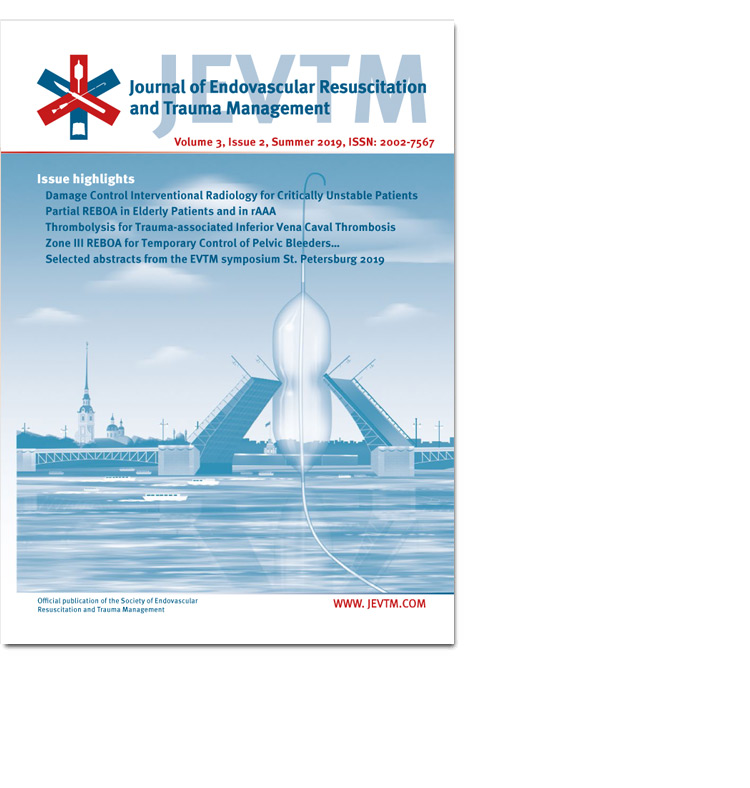Successful Partial Resuscitative Endovascular Balloon Occlusion of the Aorta (REBOA) in an Octogenarian Trauma Patient
DOI:
https://doi.org/10.26676/jevtm.v3i2.84Keywords:
Resuscitative Balloon Occlusion of the Aorta, REBOA, Trauma, Resuscitation, Hemorrhage controlAbstract
Background: To perform effectively Resuscitative Endovascular Balloon Occlusion of the Aorta (REBOA) in an extreme elderly trauma patient, the distinct issues that make a difference are the anatomical and physiological changes. Multiple maneuvers were performed simultaneously for favorable outcomes to balance between critical organ perfusion and bridging control of bleeding.
Method: We demonstrate how to perform successfully REBOA in an octogenarian patient with coma and profound hypotension on arrival. A primary survey found unstable pelvic fracture and severe head injury. Admission laboratory investigations in the intensive care unit showed normal renal and liver function with not significantly increased serum lactate.
Conclusion: To perform ABO/REBOA in an extremely elderly trauma patient, the partial balloon technique with a goal systolic blood pressure to balance associated injuries in polytrauma patients is essential. The specific concern in this group would be related to reserve function and changing vascular access. Techniques for detection and solving uneventful conditions should be prepared and learned to successfully save elderly patients.
Published
How to Cite
Issue
Section
License
Copyright (c) 2019 Journal of Endovascular Resuscitation and Trauma Management

This work is licensed under a Creative Commons Attribution 4.0 International License.
Authors of content published in the JEVTM retain the copyright to their works.
Articles in the JEVTM are published under the terms of a Creative Commons CC BY 4.0 license, which permits use, downloading, distribution, linking to and reproduction in any medium, provided the original work is properly cited.




